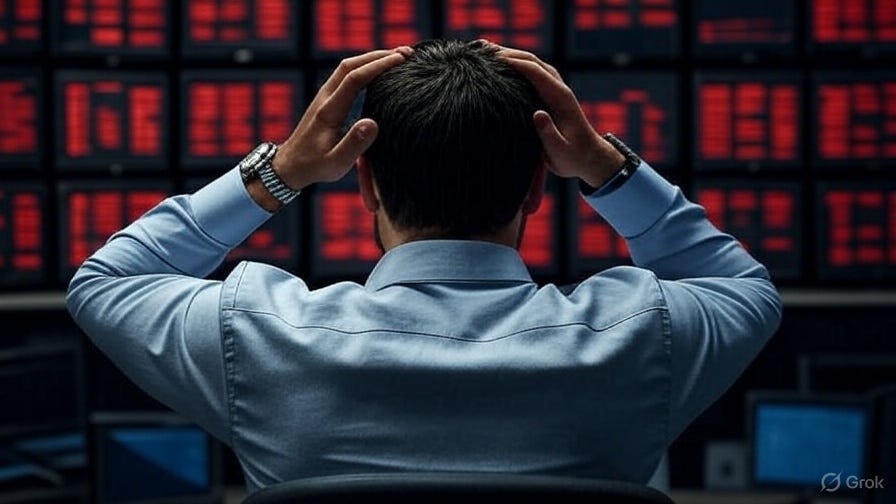Diversification Didn’t Protect You. It Exposed You.
The next crash won’t care how “safe” your portfolio looks.
April was brutal.
Everything went down. Stocks, bonds, even so-called “safe” blue chips—nothing was spared.
Diversification? It was a punchline.
I’ll never forget the night my wife’s mom called in a panic.
She’s always been careful, paid off her house, trusted her Fidelity advisor, never worried about the market.
But this time was different.
“I’m going to lose everything!”
She wasn’t the only one. Most investors just trust the plan, never really knowing how much risk they’re carrying… until it’s too late.
Diversification Didn’t Just Fail—It Betrayed You
Wall Street has sold investors a simple story for decades: own a little bit of everything, and you’ll be protected.
Own the S&P 500, a slice of bonds, maybe some international stocks.
It’s called diversification.
But when the real selling starts, those so-called “safe” strategies do not hold up.
When everything goes down at once, what are you really protected from?
The headlines told us to buy the market, hold the market, and you’ll be fine. But almost every diversified portfolio bled out just like the rest.
The S&P 500 Is a Mirage
Take a look inside your S&P 500 index fund. The “Magnificent Seven” tech giants—Apple, Microsoft, Nvidia, Google, Amazon, Meta, and Tesla—now make up more than thirty percent of the entire index.
That is not diversification. That is concentration in disguise.
You are not owning the market, you are riding a handful of stocks.
And if those few names get hit, your whole “diversified” strategy sinks with them.
Passive Has Gone Extreme
We live in a time when more money is passive than ever before. That sounds safe, but it isn’t.
All those index funds and ETFs herd investors into the same crowded trades.
Today’s “diversification” isn’t really risk management. It’s just a different kind of crowd risk.
You are trusting the crowd not to stampede for the exits. That is not a plan. That is hope.
VOO Today. What Tomorrow?
Here’s the other trick: Low fees. Everybody brags about their zero point zero three percent expense ratio.
But what good are low fees if the whole herd is running over a cliff together?
When the next crash hits, those low-fee funds will drop just as fast as everything else—sometimes even faster, because everyone tries to get out at the same time.
Real Diversification Means Uncorrelation
The truth is, real protection doesn’t come from owning more of the same.
It comes from owning things that actually move differently when panic hits.
What does real diversification look like?
Tangible assets like gold, real estate, and commodities
Cash when it pays to wait
Flexible strategies—being able to go long and short
A smart slice of crypto for volatility and potential upside
That is not what Wall Street sells. But it is what works when the “diversified” crowd gets crushed.
Own The Best. Trade The Rest.
If your plan is just “keep up with the market,” you are already behind.
Because when markets drop, getting “back to even” is not a win. It is missing the chance to buy great assets at a discount while everyone else panics.
The market punishes the herd. The winners are always the ones who see the risk for what it is and have the nerve to be positioned for the turn.
A Rigged Game With a Broken Map
Take a hard look at your own portfolio. If your diversification is just the same seven stocks in a different wrapper, you are not protected. You are exposed.
This market isn’t getting safer. It’s getting more crowded, more volatile, and more dangerous for anyone following the herd.
Don’t let the next selloff catch you napping. Think different. Demand more. And when the dust settles, make sure you are the one who is free, not just “diversified.”
Trade smart. Until tomorrow,
Josh Belanger



